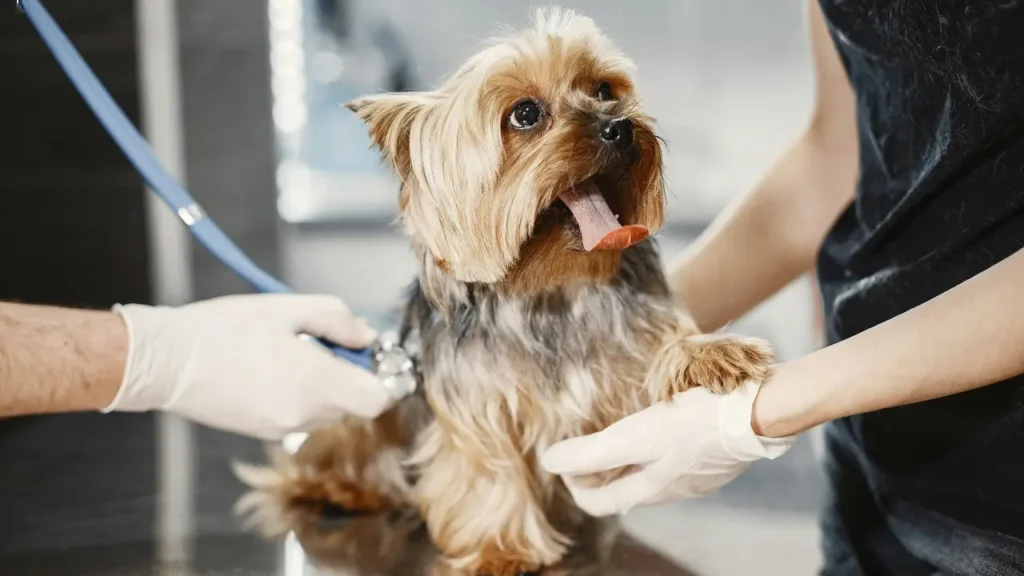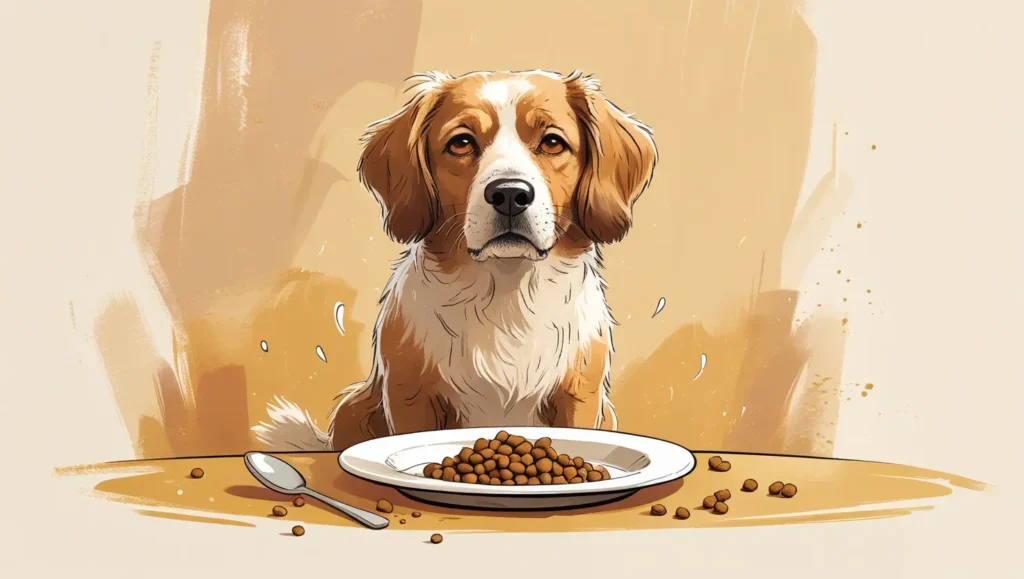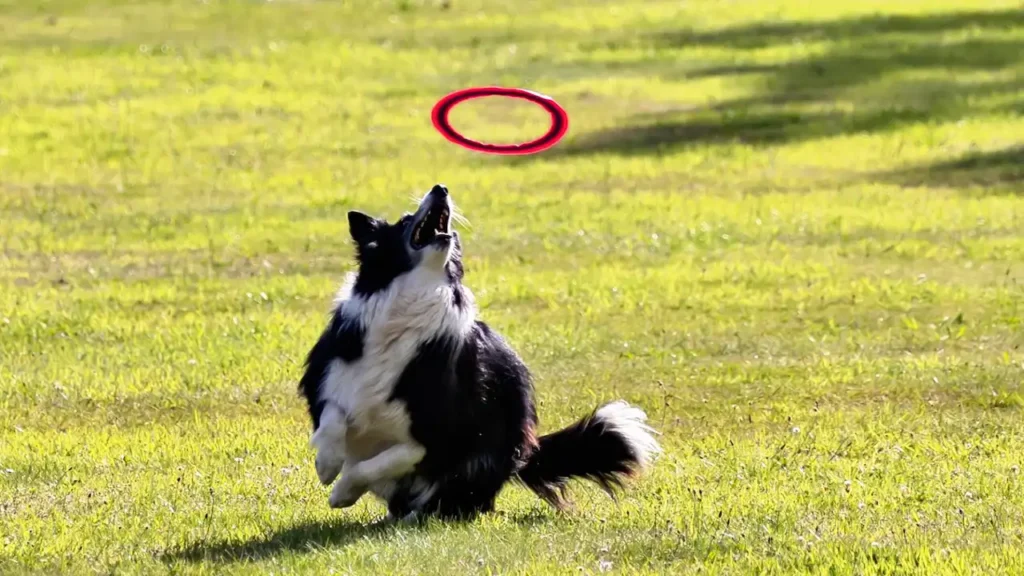Dog can’t always tell us when something is wrong. That’s why it’s crucial to recognize the signs that indicate your dog may need veterinary attention. From subtle changes in behavior to obvious symptoms of illness, knowing when to call a vet can make all the difference in ensuring your dog’s health. This guide will help you navigate the most common scenarios where professional veterinary care is necessary.
Signs of Illness
Lethargy
Lethargy in dogs indicates a wide range of issues. It can range from simple fatigue to serious conditions like infections, organ failure, and poisoning. If your dog is unusually tired, unresponsive, and unwilling to move for more than 24 hours, contact your vet immediately.
Loss of Appetite
Dogs may refuse food due to stress, dental problems, gastrointestinal upset, and kidney disease and cancer. If your dog refuses to eat for more than 24 hours (12 hours for puppies), or if they are drinking less water, it’s time to consult a veterinarian.
Vomiting/Diarrhea
Occasional vomiting and diarrhea can be caused by dietary indiscretion. Persistent episodes of these symptoms could signal gastrointestinal issues, infections, parasites, and pancreatitis. Contact your vet if your dog vomits multiple times in a day, has bloody vomit or stool, or experiences diarrhea for more than 24 hours.
Coughing/Sneezing
Coughing and sneezing can be caused by allergies, respiratory infections, kennel cough, heartworms, and foreign objects lodged in the throat. Persistent coughing, gagging, and difficulty breathing should be evaluated by a vet. If your dog is also lethargic, has nasal discharge, or seems to be struggling to breathe, seek immediate care.
Fever
A dog’s normal body temperature ranges from 101°F to 102.5°F (38.3°C to 39.2°C). A fever in dogs indicates an infection, inflammation, and other underlying health issues. If your dog’s temperature exceeds 103°F (39.4°C), it’s considered a fever. Temperatures above 106°F (41.1°C) are life-threatening and require emergency treatment. Use a rectal thermometer to check your dog’s temperature accurately.
Excessive Panting
Panting is normal after exercise and in hot weather. Excessive panting without physical exertion and heat exposure may indicate pain, anxiety, heatstroke, and cardiovascular issues. If your dog is panting heavily indoors or at rest, especially if accompanied by other symptoms like lethargy, drooling, and distress, contact your vet right away.
Behavioral Changes
Aggression
Sudden aggression can be triggered by pain, fear, illness, and changes in the environment. If your dog’s behavior changes drastically—such as becoming aggressive, fearful, and overly anxious—it’s important to rule out underlying medical issues. A vet can help determine if the behavior is due to pain, hormonal imbalances, or neurological problems.
Disorientation
Confusion, disorientation, and wandering aimlessly can be signs of cognitive dysfunction syndrome, brain tumors, and other neurological disorders. If your dog seems confused, gets lost in familiar places, and doesn’t recognize family members, schedule a vet visit.
Excessive Licking
Excessive licking or chewing can be caused by allergies, skin infections, pain, and obsessive-compulsive behaviors. If your dog is obsessively licking or chewing a specific area, causing hair loss, redness, or open sores, consult your vet. This could indicate an allergic reaction, flea infestation, and underlying pain.
Physical Symptoms
Swelling
Swelling or lumps can be benign (like fatty tumors) or malignant (cancerous). They can also be caused by infections, insect bites, and abscesses. Any new lump or bump that appears suddenly, grows rapidly, and feels hard and immovable should be checked by a vet.
Difficulty Walking
Lameness can result from injuries (sprains, fractures), arthritis, hip dysplasia, and neurological issues. If your dog is limping, unable to put weight on a leg, and has difficulty standing up, it’s important to get them evaluated. Chronic lameness can worsen over time and may require imaging (X-rays, MRI) to diagnose properly.
Eye/Ear Problems
Redness, discharge, cloudiness, and excessive scratching at the eyes or ears can indicate infections, allergies, foreign objects, glaucoma or ear mites. If your dog is pawing at their eyes or ears, has discharge, and seems sensitive to light or touch, schedule a vet appointment. Eye and ear infections can escalate quickly and cause permanent damage if untreated.
Skin Issues
Hair loss, rashes, sores, and persistent itching can be caused by allergies, parasites, fungal infections, and hormonal imbalances. If your dog is excessively scratching, biting, and losing hair, it’s time to see a vet.
Bad Breath
Bad breath in dogs can indicate dental disease, gum infections, and systemic issues like kidney disease. If your dog has bad breath, drools excessively, has difficulty eating, and shows signs of pain when chewing, schedule a dental check-up.

Ingestion of Toxic Substances
Poisoning
Many common household items are toxic to dogs. Chocolate, grapes, raisins, xylitol, antifreeze, cleaning products, and certain plants are poisonous to dogs. If you suspect your dog has ingested something toxic, call your vet or an animal poison control hotline immediately. Time is critical in cases of poisoning.
Foreign Objects
Dogs often swallow non-food items. Toys, bones, socks, and rocks can cause choking, intestinal blockages, and internal injuries. If your dog is gagging, retching, vomiting, and showing signs of abdominal pain after swallowing something unusual, seek veterinary care immediately.
Trauma
Accidents
Car accidents, falls, and other traumatic events can cause fractures, internal bleeding, and head injuries. If your dog has been involved in an accident, even if they seem fine initially, take them to the vet for a thorough examination. Internal injuries may not be immediately apparent.
Bites/Scratches
Bites or scratches from other animals can lead to infections, abscesses, and the transmission of diseases like rabies. Any bite or scratch wound should be cleaned and evaluated by a vet, especially if it’s deep or came from a wild or unknown animal.
Burns/Cuts
Burns can occur from heat, chemicals, and electrical sources, while cuts can happen from sharp objects. For severe burns or deep cuts, seek veterinary care immediately.
Reproductive Issues
Unspayed Females
Unspayed female dogs can experience complications during pregnancy and labor, such as dystocia (difficulty giving birth). If your dog is straining to give birth for more than 30-60 minutes without delivering a puppy, or if she seems distressed, contact your vet immediately.
Male Dogs
Male dogs can develop swelling or discomfort in the genital area due to infections, tumors, and trauma. If your male dog shows signs of pain, swelling, and difficulty urinating, schedule a vet visit to rule out infections and other issues.
Urinary Issues
Difficulty Urinating
Straining to urinate, blood in urine, and inability to urinate can indicate urinary tract infections, bladder stones, and urethral obstructions. Inability to urinate is a medical emergency. Urethral obstructions can lead to kidney failure and death within hours if not treated. Contact your vet to diagnose the matter.
Constipation
Constipation can be caused by dehydration, dietary issues, and underlying medical conditions like megacolon or prostate problems. If your dog hasn’t had a bowel movement in more than 2 days or is straining to defecate, consult your vet.
Excessive Thirst/Urination
Increased thirst and urination can be signs of diabetes, kidney disease, Cushing’s disease, and other metabolic disorders. If your dog is drinking and urinating excessively, schedule a vet visit to check for underlying conditions.
Seizures/Collapse
Seizures
Seizures can be caused by epilepsy, poisoning, brain tumors, and low blood sugar. Any seizure lasting more than a few minutes or multiple seizures in a short period require immediate veterinary attention.
Collapse
Collapse can result from cardiovascular issues, shock, and severe weakness. If your dog collapses or becomes weak and unable to stand, seek emergency care immediately.
Routine Check-Ups for Dogs
Puppies (0-12 months): Visit a vet every 3-4 weeks until 16 weeks of age, then annually. Puppies need frequent visits for vaccinations, deworming, and monitoring growth and development. Early socialization and training advice may also be provided during these visits.
Adult Dogs (1-7 years): You should visit your vet once a year for your adult dog. Annual wellness exams help ensure that your dog remains healthy and up-to-date on vaccinations, parasite prevention, and dental care. It’s also an opportunity to discuss any behavioral and dietary concerns.
Senior Dogs (7+ years): Visiting the vet twice a year for your senior dog. Older dogs are more prone to age-related conditions like arthritis, kidney disease, heart disease, and cognitive decline. More frequent check-ups allow the vet to monitor these issues closely and adjust care plans as needed.
Emergency Situations
If your dog is experiencing any of the following, it’s considered an emergency, and you should seek veterinary care immediately:
- Difficulty breathing or choking
- Severe bleeding or trauma
- Inability to urinate or pass stool
- Seizures or loss of consciousness
- Poisoning or ingestion of toxic substances
- Heatstroke or severe hypothermia
- Bloat
Your dog relies on you to recognize when something is wrong. Regular monitoring of their behavior, appetite, and overall health will help you catch problems early. When in doubt, contacting your veterinarian is always the safest course of action.




